If you've been using one of the best washer-dryers for a while and haven't cleaned it yet, this is your sign to do so.
We spoke to laundry and home tech experts to bring you this step-by-step guide with tips, tricks, best practices, and techniques for cleaning your washer-dryer. Discover why cleaning your machine regularly is essential to maintain its longevity.
As the best washing machines and dryers require regular care and maintenance to maintain good working order and effectively clean and dry clothes of everyday dirt, germs, and stains, washer-dryers also require regular care and maintenance.
Arguably, if you own a washer-dryer, it's advisable to take better care of it than separate appliances because it performs double duty and works twice as hard for you. It cleans and dries your clothes while performing two functions.
The interior of washer-dryers can collect a build-up of grime and fabric fibers or develop unpleasant odors. Similarly, the detergent drawer and filters can also become blocked and clogged with lint, detergent residue, dirty water, or even mold, and it's key to pay attention to these areas to keep your clothes as clean as possible.
If washer-dryers aren't routinely maintained, their performance will likely suffer, and the machine may break down. So save yourself the hassle and give your washer-dryer the required attention.
Our experts tell us many people make numerous pitfalls and mistakes with washer-dryer combos. Therefore, we highly recommend educating you on how a washer-dryer works and why yours may not be drying effectively.
If you want to purchase a new appliance, you may also wish to consult our guide on installing a washer-dryer. Certain factors should be familiarized before making a purchase.

Joy Aumann is a licensed realtor (CIPS), interior designer and co-founder of the LUXURYSOCALREALTY team at COMPASS. 2021 and 2022 Wall Street Journal Real trends; ranked in the top 1,000 small real estate teams nationwide; two decades of luxury real estate and design experience staging homes; cited in major publications like The Wall Street Journal, Forbes, and Inc.

Gwil is a heated laundry and dishwasher expert with more than seven years experience and holds a particular interest in heat pump tumble dryers.

Ian Palmer-Smith is a Supplier and Heating Service Director at Domestic & General and a domestic appliance service and repair expert with over 35 years of professional experience.
- Dish soap or liquid detergent
- Baking soda (to neutralize odors)
- White vinegar (to neutralize odors and remove soap scum or mold)
- Washing cleaner tablets or liquid (optional)
- Mild disifectant (to remove mold if required)
- Rubbing alcohol (for grease stains or residue if required)
- Cloth
- Hot water
- Sponge
- Old toothbrush (if required)
- Vacuum cleaner and hose attachment (for removing lint in filter)
- Old towels (for mopping up any water)
Expert Joy Aumann explains: "Keeping your washer-dryer clean is essential for it to work well. Run a cleaning cycle now and then to clear out detergent buildup. Wipe down the detergent drawer and check the drain filter regularly—it may not have a lint trap, but the filter can still get clogged. A clean machine means better performance and fewer odors, so don’t skip this step."
We always advise consulting the manufacturer's guidelines and user manual for specific cleaning instructions for your make and model.
Read on for our expert guide to keep your washer-dryer and clothes as squeaky clean as possible.
If you have separate machines, check out our guides on how to clean a front-load washer, a top-load washer , and a dryer.
How to clean your washer-dryer: Quick steps
- Clean the internal and external drum of your washer-dryer
- Run a wash cycle and spin
- Clean the detergent drawer
- Clean the filters
- Empty the lint trap (or alternative filter compartments)
- Clean the dryer vent and pump
- Clean the outside of your washing machine
How to clean your washer-dryer: Step-by-step guide
1. Clean the internal and external drum of your washer-dryer
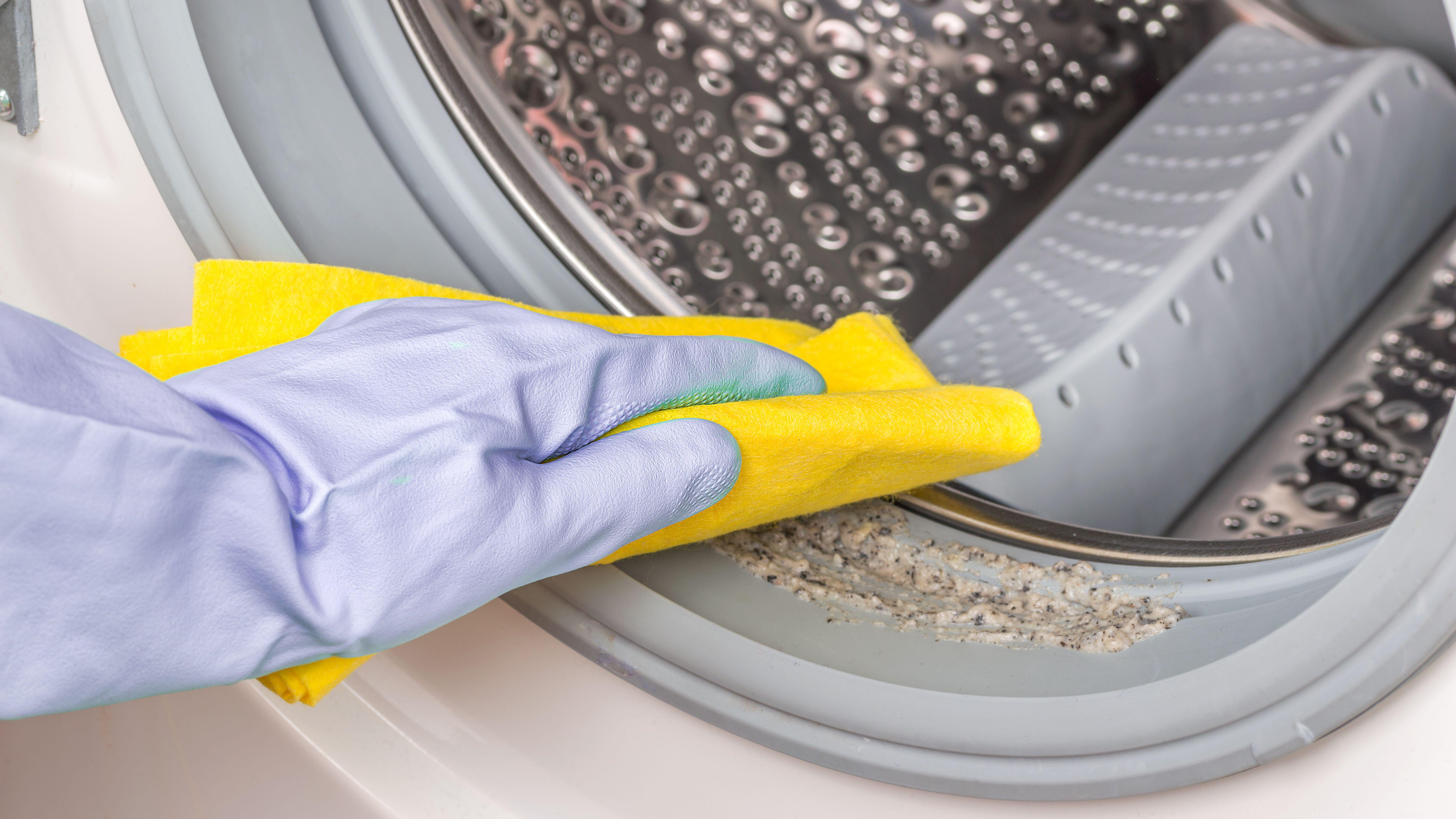
Fill a bucket with hot, soapy water, and use a sponge or a cloth to clean inside the drum by hand, utilizing any of the cleaning products listed. Clean the seal around the doo,r as mold can build up here. Be vigilant to ensure you remove any scum or detergent build-up or fluff from fabric fibers.
Be sure to clean all around the inside and outside of the drum and the door. A simple dish soap like this Dawn Platinum liquid on Amazon is excellent.
AO expert Gwil Snook advises: "Run a maintenance wash with an empty drum using a washing machine cleaner or a mix of white vinegar and baking soda. Top tip: Don’t forget to wipe the drum, door seal, and exterior with a damp cloth."
Ian Palmer-Smith, Supplier and Heating Service Director at Domestic & General,, says: “Your washing machine seal will benefit from the deep clean maintenance cycle, as it will help tackle any dirt that has built up. However, sometime,s, a maintenance cycle isn’t enough, as bacteria and mold can get trapped in the lip of the seal.
"The best way to clean this is with a damp cloth and disinfectant spray. Spray your product into the lip and then use our cloth to get into it and dig out any dirt that has built up.”
2. Run a wash cycle and spin
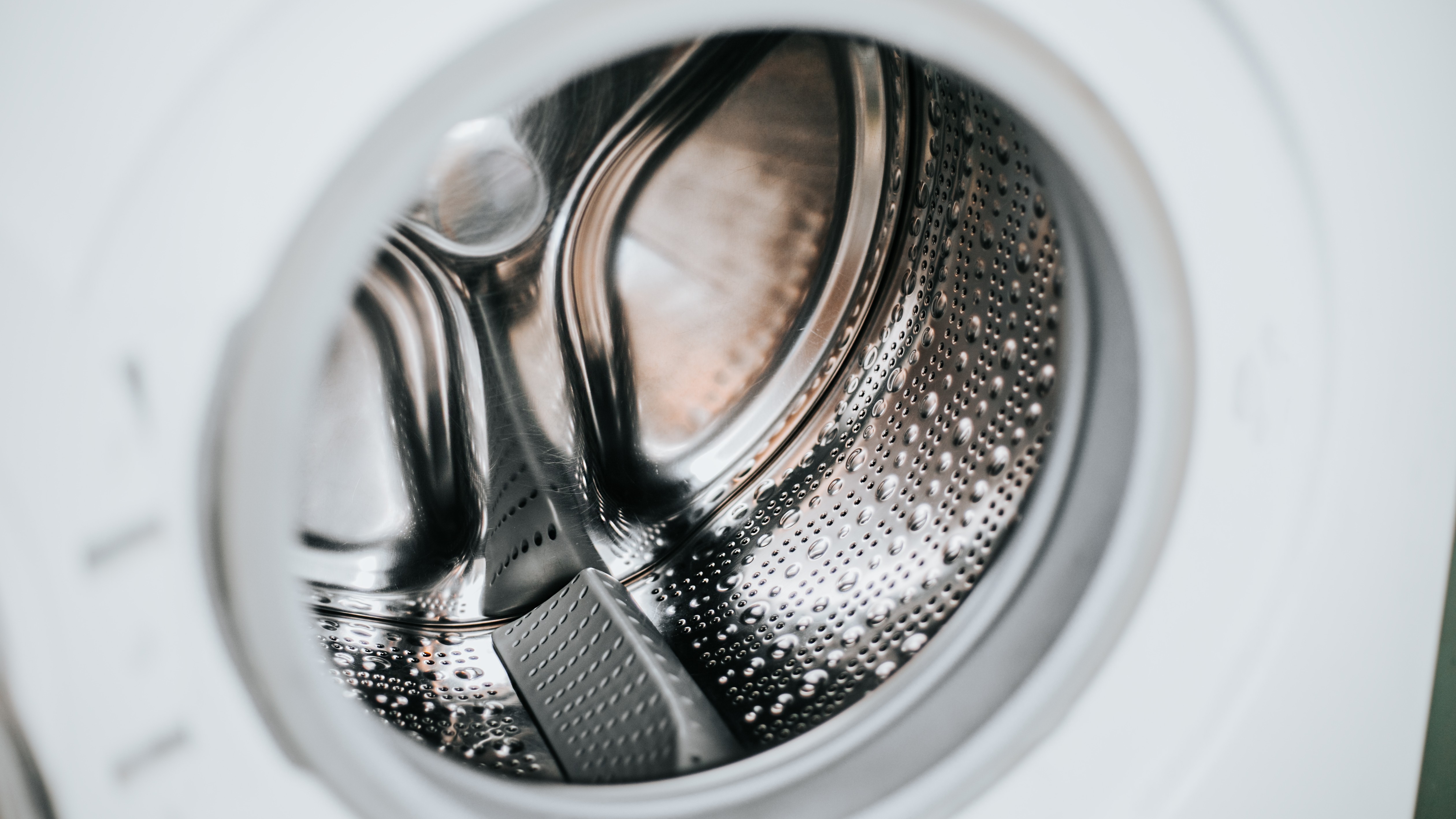
Ian Palmer-Smith also advises: “The easiest way to clean out the drum of your washing machine is to run a maintenance wash cycle."
"A maintenance wash is essentially a deep-clean cycle that helps to kill off any bacteria, mold, and any stains or sludge that has built up. This is carried out by performing a very hot ‘cotton’ wash coupled with some washing machine cleaning solution."
Use a washing machine cleaner like these tablets from Affresh on Amazon (or pour half a cup of liquid chlorine bleach into the dispenser). We recommend using washing machine cleaners as they have unique ingredients to remove grease and detergent build up.
Next, run a wash, rinse, and spin cycle. Ian advises: “It is best to do this at least once a month to keep the washing machine nice and clean which will keep your laundry clean and fresh too!”
3. Clean the detergent drawer
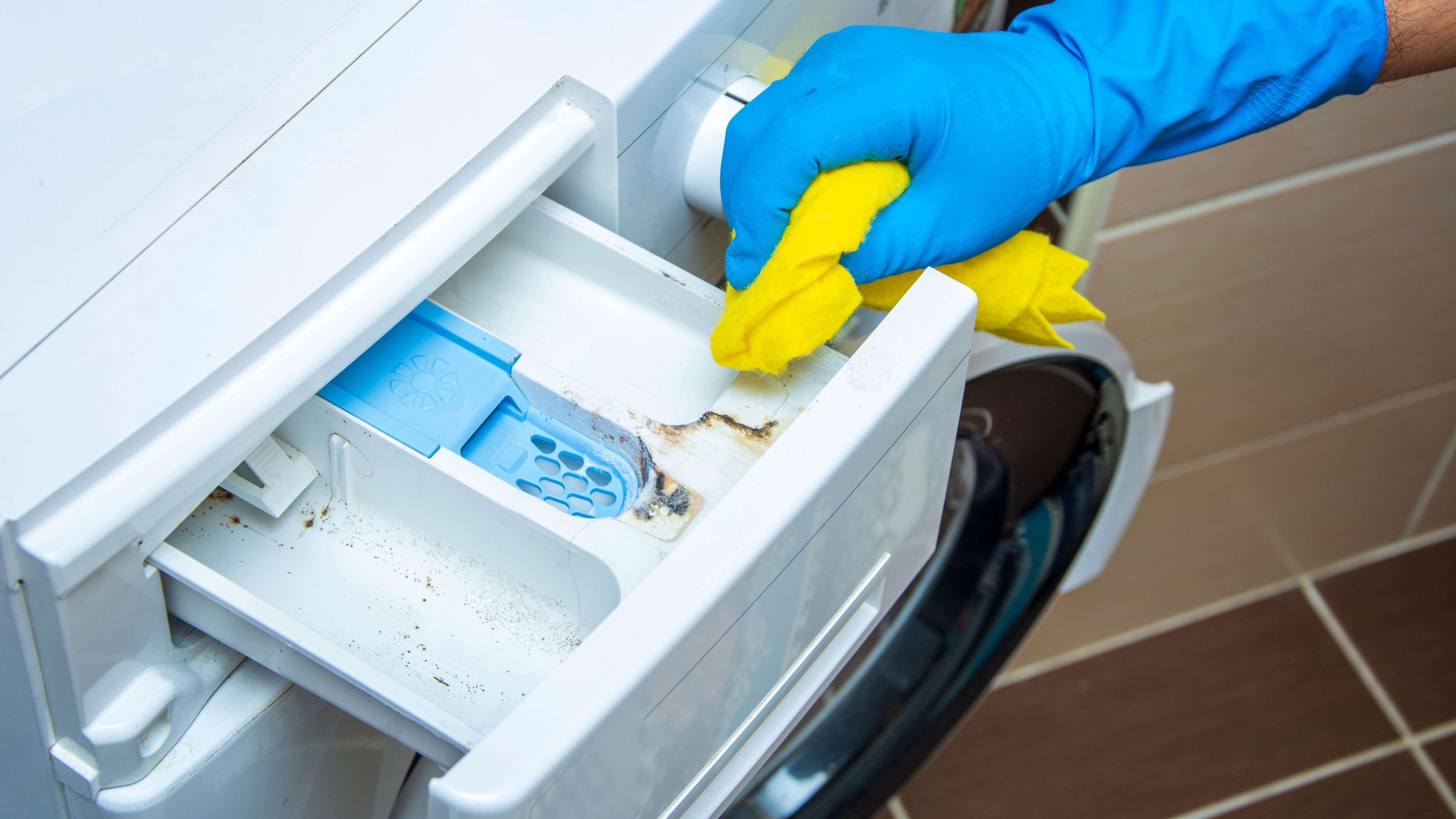
Laundry detergent easily and quickly tends to build up in the dispenser drawer, so it's advisable to wash it regularly to keep it fresh.
Ian says: “To clean the drawer, you first want to remove it from the machine and then soak it in warm, soapy water. Remove any small drawer components to ensure no area is missed."
“Once it has been soaking, remove the drawer and any components from the water, rinse them off, and leave them to dry. Make sure to wipe down the slot in the machine before replacing the drawer.”
You can also use a toothbrush and a sponge to remove stubborn spots in tight corners. It's recommended that you air out the drawer occasionally to prevent mold from developing, as it has a damp interior.
4. Clean the filters
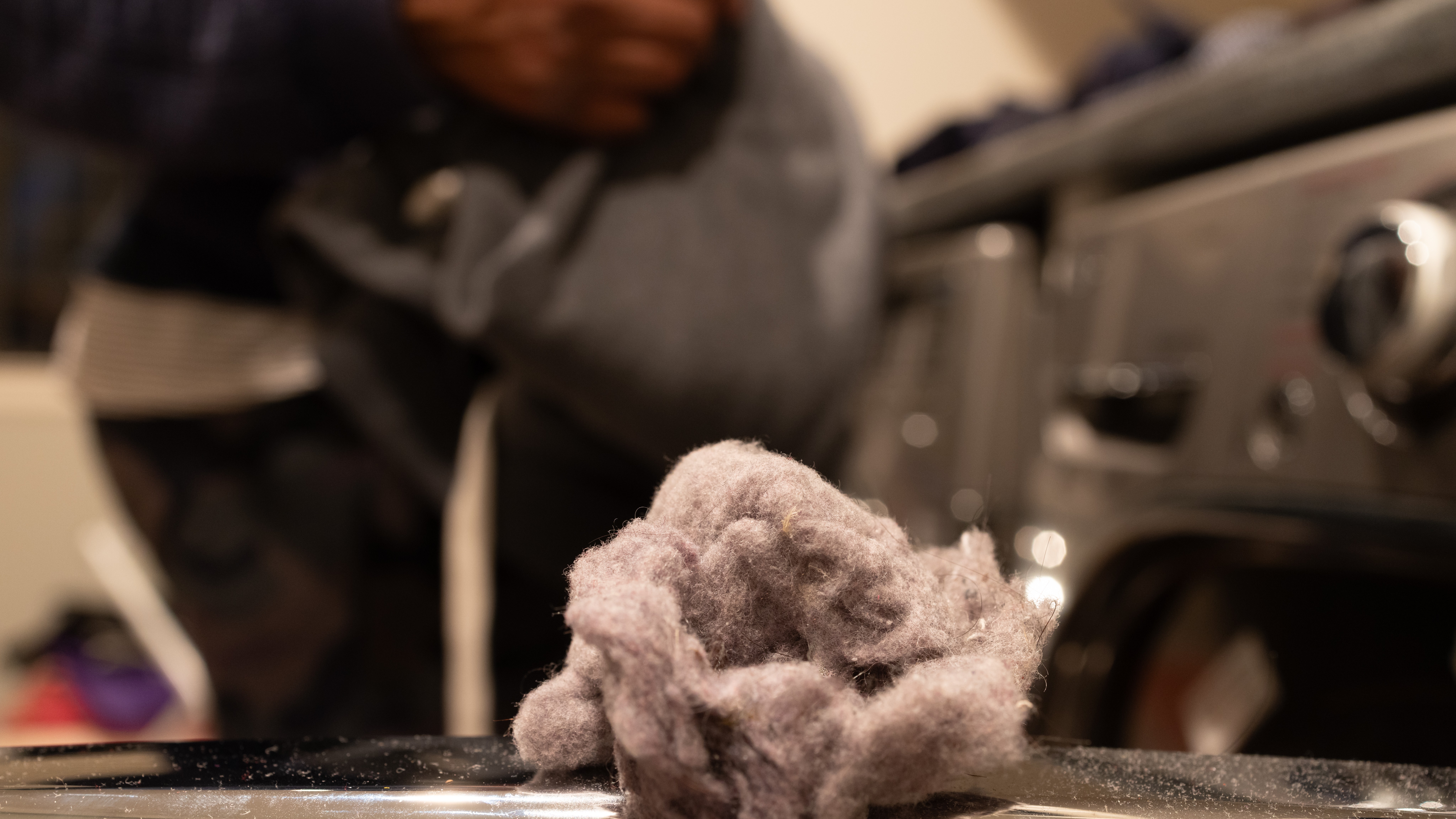
Ian Palmer-Smith explains how to clean the filters, advising that they should be cleaned every four to six weeks to avoid problems with performance or the appliance breaking down.
Ian says, "The filter is at the bottom of the machine. You may need to remove the cover to access it. When you do, water will likely leak out, so make sure you lay down towels to protect your floors."
"You then need to unscrew the filter and allow the water to drain out. Once this is done, remove the filter and run it under hot water. Leave it to dry before screwing it back on. Ensure it is screwed on tightly to avoid any leaks, then replace the cover to complete the task.”
5. Empty the lint trap
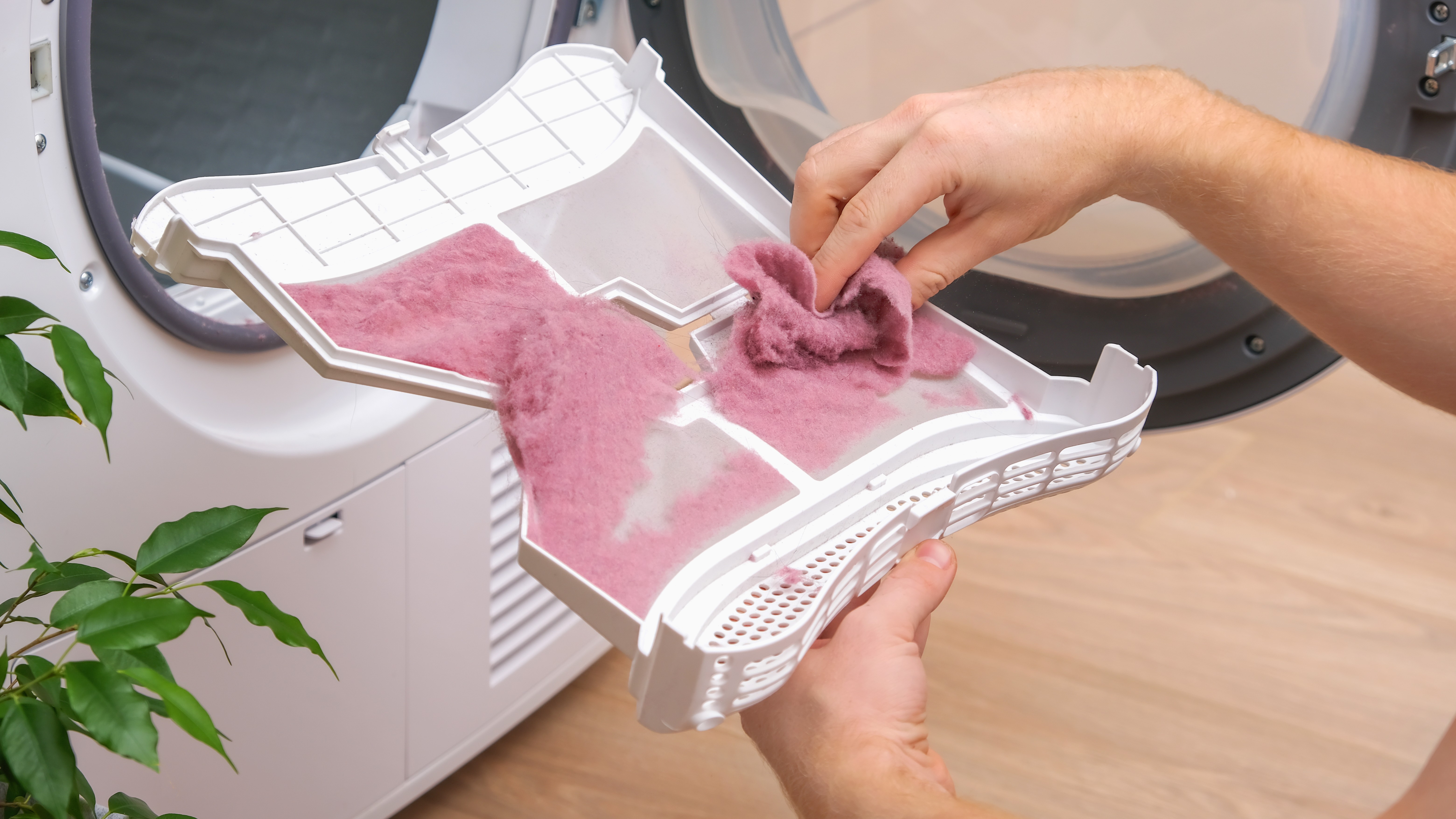
If your machine has one, it's key to pay attention to the lint trap between each wash and dry, as build-up can affect the drying process's efficacy.
Remove the lint trap and wipe down with a damp cloth. Then, vacuum any lint in the compartment with a hose attachment.
If your machine doesn't have a lint trap, there will be other corresponding filter compartments to pay attention to, so follow the user manual instructions to guide you.
It's also wise to inspect the siphon or drainpipe to ensure it’s free of any blockages.
6. Clean the dryer vent and pump

Turn off the power source and disconnect the appliance.
Cleaning and laundry expert Sarah Dempsey advises that the drain pump filter should be cleaned every two to three months, depending upon the frequency of use.
Sarah explains, "This is usually located on the front of your machine in the bottom left or right-hand corner. To clean it, ensure your machine is cool and then unplug it."
"Place a shallow tub underneath the filter cover and open it. Turn the filter slightly to allow the water to empty, and then remove it completely."
"To clean the filter, run it under the cold tap and then replace it. Filters vary between makes and models, so check your manual’s instructions before cleaning them."
It's also advisable to check the exterior vents and drainage for blockages.
7. Clean the outside of your washing machine
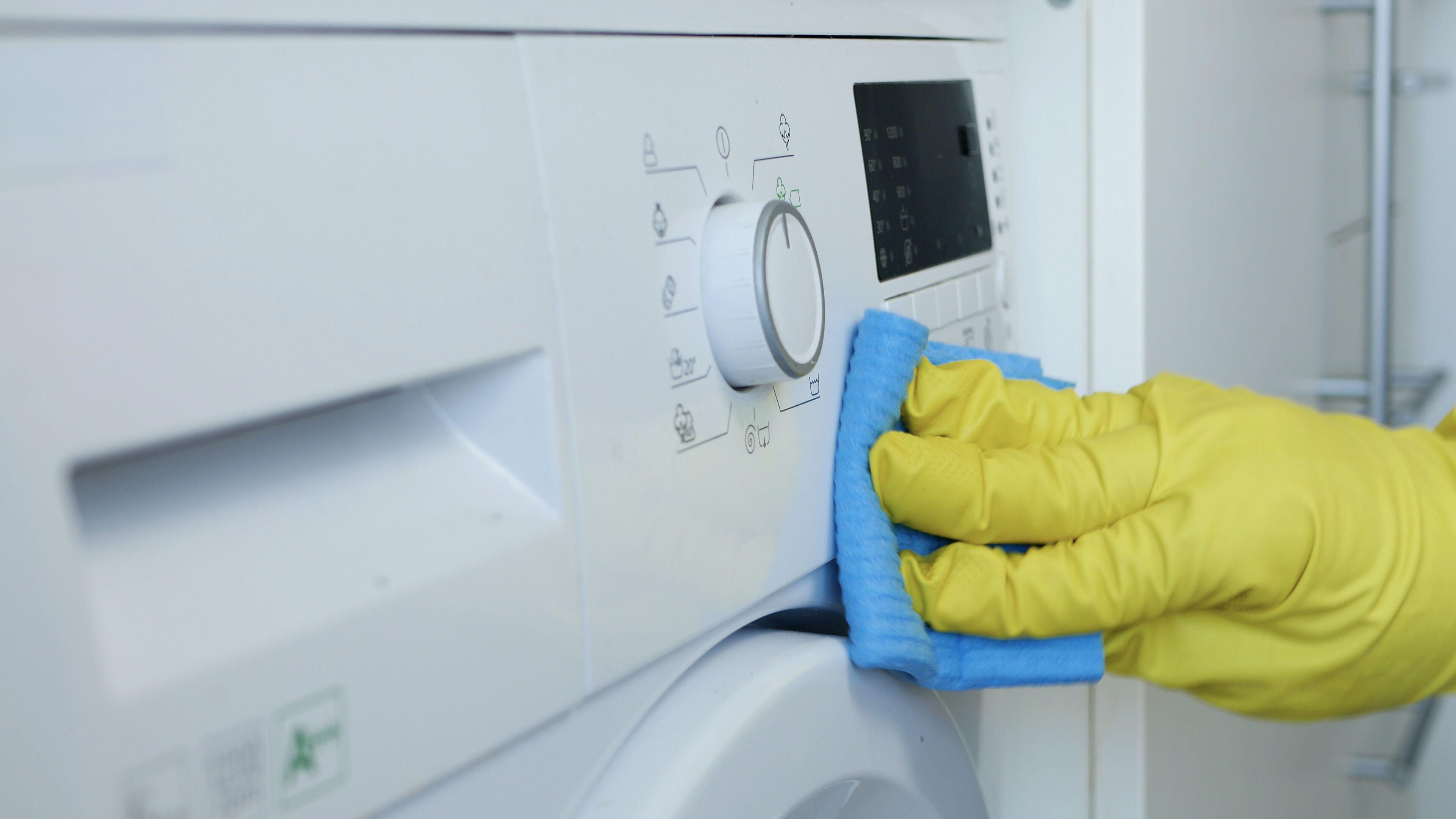
Finally, finish off your sparkling clean washer-dryer with a clean of the exterior. It's surprising how much grease, grime, dust, and gunk get stuck to the outside of our appliances; it's only when you take a closer look you see the build-up of dirt.
Give it a refresh with a wipe-down all over, and be sure to dry it thoroughly within and without. Any moisture left within can quickly develop into mold.
How to clean your washer-dryer: FAQs
How often should you clean your washer-dryer?
According to our experts, the general advice is to clean and refresh your washer-dryer every four to six weeks if you use it regularly.
You may wish to check for blockages and remove lint more frequently, as and when you notice that the machine isn't drying or even every few days.
A good wash with hot, soapy water, plus any of the required detergents listed above, as needed, along with the expert guidance above, will help keep your washer-dryer working in tip-top condition, giving you fresh, hygienically clean clothes and linens for as long as possible.
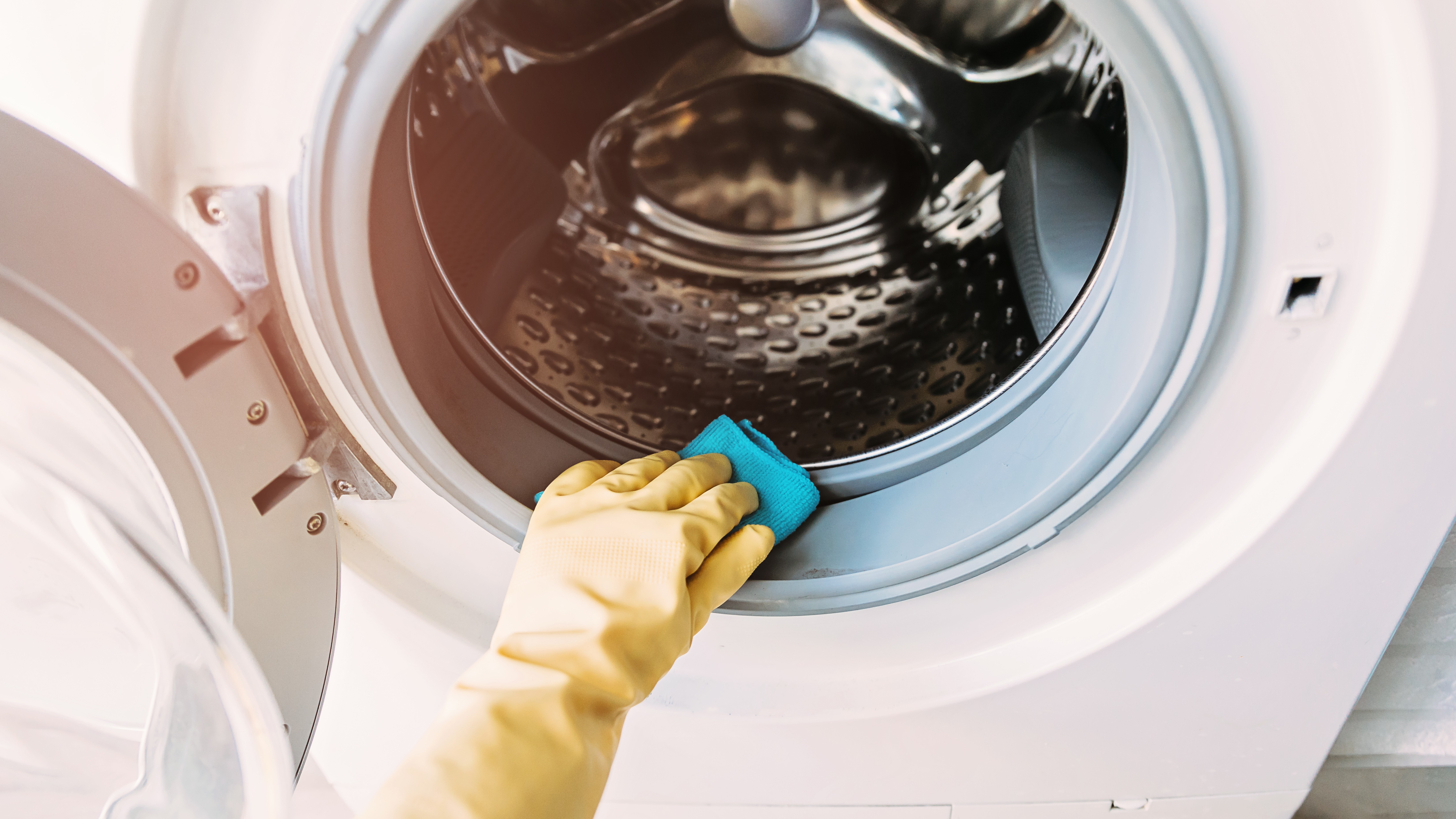
How to stop your washer-dryer from smelling
Take a look at the steps above to prevent unpleasant odors. Mildew, dampness, or mold will inevitably smell bad, so it is rational to assume that your washer-dryer requires a clean if it's smelly.
Stick to a regular cleaning schedule for your washer-dryer to prevent the smells.
You can remove your clothes from the washer-dryer when the cycle completes to avoid stagnant smells.
Be sure to only add as much detergent as required for your wash, as too much can encourage build-up, which may also develop mold.
Sarah Dempsey says, "After every use, leave the door and detergent drawer open to allow air to circulate and prevent mold growth. It’s also good to check that the drum and door seal are fluff-free."
"Wiping around the inside with a damp microfibre cloth effectively removes lint and other trapped particles. Once a month, give your drum a bit of a sniff. If it has a stale smell, run a drum-cleaning cycle."
For a more detailed guide, check out our expert feature on how to stop your washing machine from smelling.
